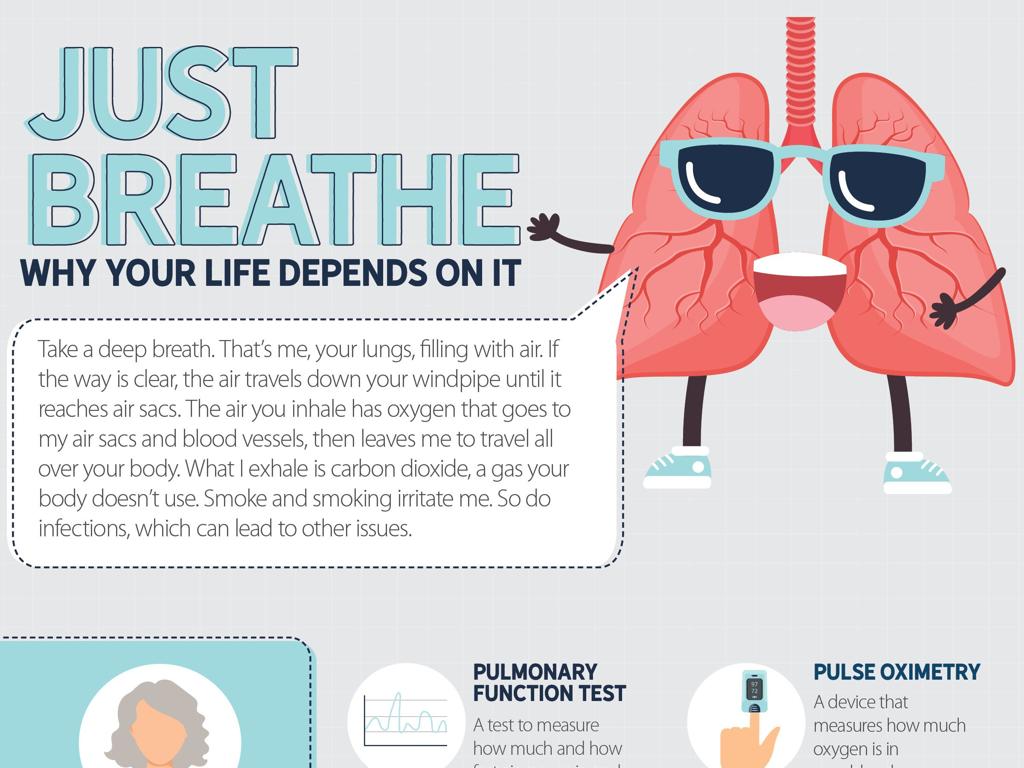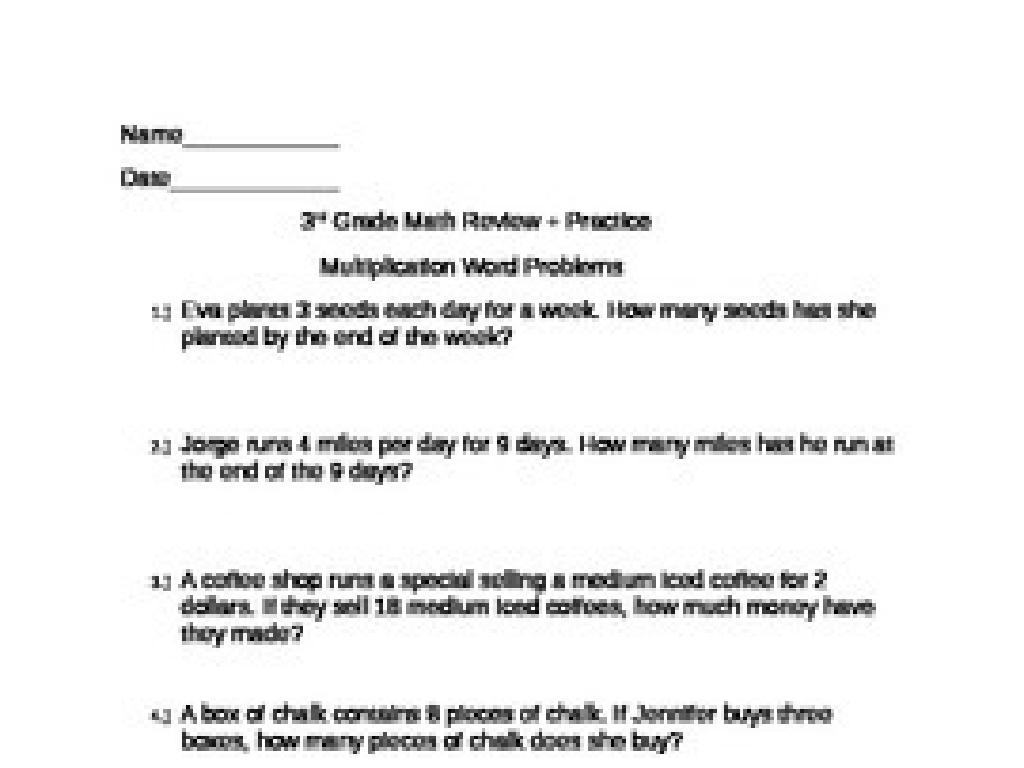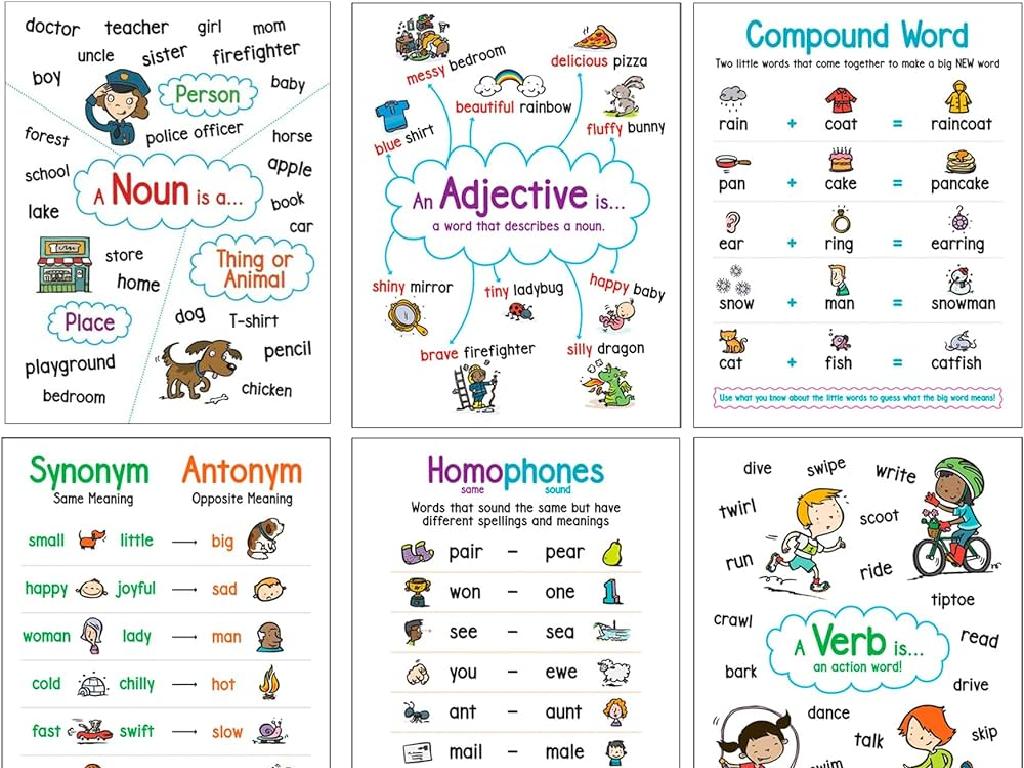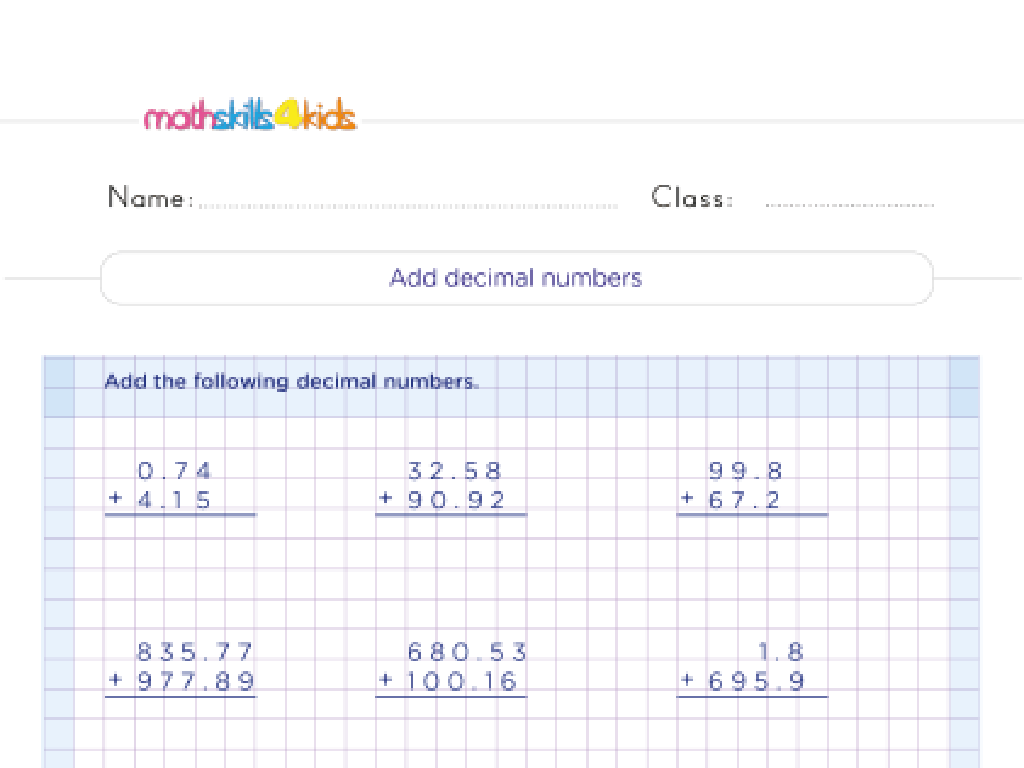Identify And Correct Errors With Compound And Joint Possession
Subject: Language arts
Grade: Seventh grade
Topic: Nouns
Please LOG IN to download the presentation. Access is available to registered users only.
View More Content
Understanding Compound & Joint Possession
– What is compound possession?
– When two or more nouns share ownership, e.g., ‘Anna and Mike’s new cafe’.
– What is joint possession?
– When two or more nouns have individual ownership, e.g., ‘Anna’s and Mike’s businesses’.
– Significance of correct possession
– Using correct possession clarifies who owns what, avoiding confusion.
– Examples of possession in sentences
– ‘The teachers’ lounge’ (joint) vs. ‘The teachers’ lounges’ (compound).
|
This slide introduces the concept of compound and joint possession, which are crucial for indicating ownership in sentences. Compound possession occurs when two or more entities jointly own a single item, while joint possession implies separate ownership of multiple items. Understanding and using correct possession forms helps to maintain clarity in communication. For example, ‘Anna and Mike’s new cafe’ suggests they own the cafe together, whereas ‘Anna’s and Mike’s businesses’ indicates they each own separate businesses. Provide students with additional examples and exercises to practice distinguishing between compound and joint possession. Emphasize the importance of the placement of apostrophes in showing possession correctly.
Understanding Possession in Nouns
– What does possession mean?
– Possession indicates ownership or belonging.
– Singular possessive nouns
– Singular: ‘The cat’s toy’ means the toy belongs to one cat.
– Plural possessive nouns
– Plural: ‘The cats’ toy’ means the toy belongs to multiple cats.
– Compound and joint possession
– When two or more own something together, it’s joint possession.
|
This slide introduces the concept of possession in the context of nouns, which is a way to show ownership or a belonging relationship. Start by explaining possession in general, then differentiate between singular and plural possessive forms. Singular possessive nouns indicate that one person or thing owns something, and this is shown by adding an apostrophe followed by the letter ‘s’. Plural possessive nouns, on the other hand, show that something belongs to more than one person or thing, and this is indicated by adding an apostrophe after the ‘s’ at the end of a plural noun. Lastly, discuss compound and joint possession, where two or more entities share ownership, and only the final noun shows the possessive form. Provide examples and exercises to practice each type of possessive noun.
Understanding Compound Possession
– Compound possession explained
– When two or more own something together
– Example: Shared ownership
– ‘Sarah and John’s pizza party’ shows joint ownership
– Usage in sentences
– ‘Sarah’s and John’s dogs’ means they each own a dog
– Correcting common mistakes
|
This slide introduces the concept of compound possession, where two or more individuals share ownership of an item or participate in an event together. Use ‘Sarah and John’s pizza party’ to illustrate that both individuals are hosting the party, indicating joint ownership with a single apostrophe before the ‘s’. Contrast this with ‘Sarah’s and John’s dogs’, where each person owns a dog, requiring separate possessive forms. Emphasize the importance of context in determining the correct form of possession. Encourage students to practice by creating sentences that show both joint and separate ownership and to be mindful of the placement of apostrophes when indicating possession.
Understanding Joint Possession
– Joint possession explained
– Each person owns separately
– Example: Sarah’s and John’s bikes
– Sarah and John each have their own bike, not shared
– Distinct ownership clarification
– Emphasize that each noun gets its own possessive form
|
This slide introduces the concept of joint possession, where each individual owns an item separately. Use the example of Sarah’s and John’s bikes to illustrate that Sarah has her own bike and John has his own, and they do not share these bikes. It’s important to clarify that in joint possession, each noun is treated individually and given its own possessive form, which is indicated by the apostrophe and ‘s’. Encourage students to come up with more examples and to correct sentences where joint possession is used incorrectly. This will help them understand the distinction between joint and compound possession, which will be discussed in the following slides.
Mastering Compound & Joint Possession
– Spot misplaced apostrophes
– Apostrophes show possession; they often go after the owner’s name
– Determine joint or separate ownership
– Joint ownership is indicated by one apostrophe, separate by two
– Correcting shared ownership errors
– ‘The teacher’s and students’ desks’ implies separate ownership. For joint: ‘the teachers’ desks’
– Practice with examples
|
This slide aims to help students identify and correct errors in compound and joint possession. Start by explaining the role of apostrophes in showing possession. Then, discuss how to determine if the ownership is joint (belonging to more than one person) or separate. Use the example provided to illustrate how a misplaced apostrophe can change the meaning of a sentence. Emphasize that for joint ownership, the apostrophe should be placed after the last owner’s name only. Provide additional examples for students to practice, such as ‘the doctors’ lounge’ (joint) vs. ‘the doctor’s and nurse’s offices’ (separate).
Practice: Compound & Joint Possession
– Correcting sentences together
– Analyze ‘Lisa and Brian’s dogs’
– Is it one dog owned by both or separate pets?
– Examine ‘actors’ and actresses’ costumes’
– Are costumes shared or individually owned?
– Determine Joint or Compound
|
This slide is aimed at practicing the identification and correction of errors in sentences involving compound and joint possession. Start by explaining the difference between joint possession (one item owned by two or more people) and compound possession (separate items owned by different people). Use the examples provided to illustrate these concepts. For ‘Lisa and Brian’s dogs,’ discuss whether Lisa and Brian share ownership of the dogs or each has their own. For ‘The actors’ and actresses’ costumes,’ analyze if the costumes are shared between actors and actresses or if each group has their own set. Encourage students to think critically about the context and how possession is indicated in each sentence. Provide additional examples if time allows and ensure that students grasp the concept by asking them to come up with sentences of their own.
Your Turn: Mastering Possession in Sentences
– Identify incorrect possession use
– Pair up for discussion
– Correct the sentences together
– Look for apostrophes and ownership structure
– Share your findings with the class
|
This slide is designed to engage students in a collaborative activity where they will apply their understanding of compound and joint possession. Students should work in pairs to identify sentences with incorrect possessive forms. Encourage them to discuss why the possession is incorrect and how it can be fixed. After correcting the sentences, each pair will share their corrections with the class, allowing for a group discussion and further reinforcement of the concept. As a teacher, circulate the room to assist pairs as needed and prepare to highlight common errors and corrections during the sharing session. Possible activities include correcting sentences from a worksheet, creating their own sentences with errors for peers to correct, or finding examples in a text.
Class Activity: Crafting Possessive Sentences
– Create sentences with compound possession
– Combine two owners sharing one item, e.g., ‘Tom and Jerry’s cheese was stolen.’
– Use classroom items for joint possession
– Pick objects in class, e.g., ‘The teacher’s and students’ desks are arranged in a circle.’
– Class review of sentence structure
– Correct errors in possessive usage
– We’ll identify and fix mistakes in our sentences together.
|
This activity is designed to help students practice creating sentences that correctly use compound and joint possession. Students should use items in the classroom to make their sentences relatable and tangible. For example, they might say ‘The chalkboard’s and teacher’s markers are both green,’ showing joint possession of the markers by the chalkboard and teacher. After students create their sentences, the class will come together to review each sentence and identify any errors in possessive structure. This collaborative review process will help reinforce the correct use of compound and joint possession. As a teacher, be prepared to guide students through the rules of possession and offer examples for clarity. Possible activities for different students could include creating sentences with varying levels of complexity, working in pairs to challenge each other, or drawing items to visually represent the possessive relationships.
Wrapping Up: Compound & Joint Possession
– Excellent effort on possession concepts
– Homework: Craft a short story
– Use both compound and joint possession
– Include 5 examples of correct possession
– Show ownership clearly in your story
– Practice is key to mastering possession
|
Today’s lesson focused on understanding and applying the rules of compound and joint possession. For homework, students are tasked with writing a short story that incorporates five instances of correct possession, ensuring they demonstrate the ability to distinguish between when to use compound possession (e.g., ‘Anna and Mike’s new business’) and joint possession (e.g., ‘Anna’s and Mike’s separate cars’). This exercise will help reinforce their understanding of how to show ownership in writing. Encourage creativity in their stories and remind them that consistent practice will help solidify these concepts. In the next class, be prepared to discuss some of the stories and highlight the correct use of possession.






